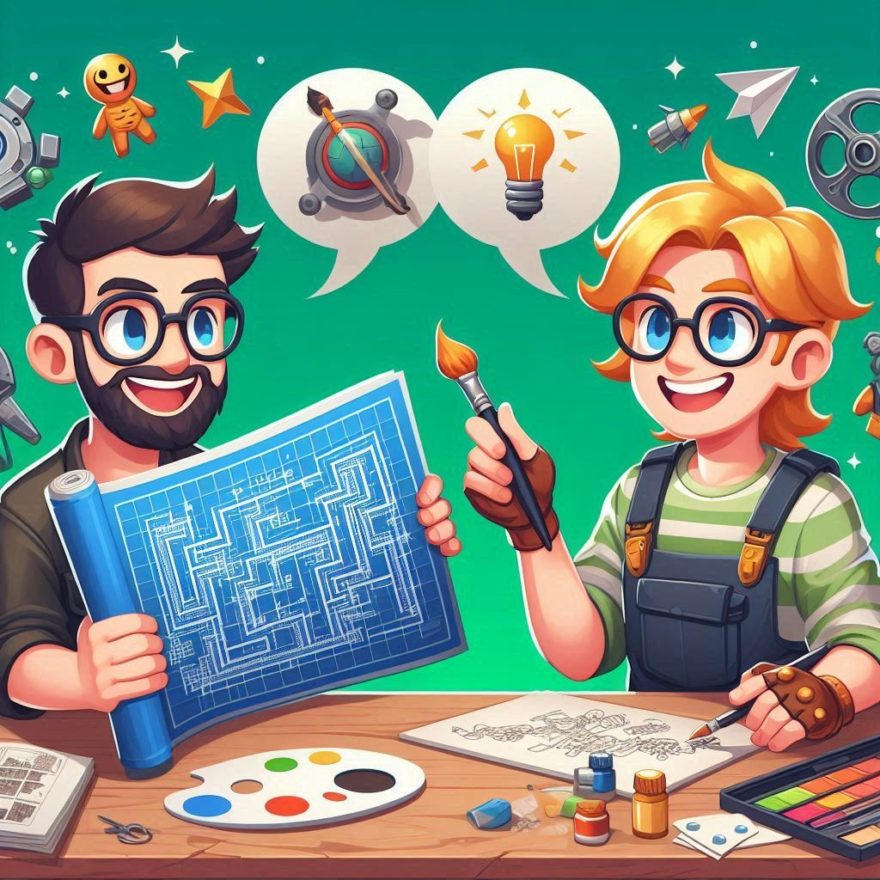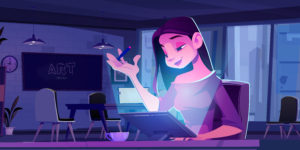The Difference Between Game Art and Game Design You Should Know

Introduction to Difference Between Game Art and Game Design
When you pick up a video game, the first thing that might catch your eye is its visual allure. The stunning landscapes, intricately designed characters, and vibrant colors all contribute to an immersive experience. It’s easy to appreciate the art, but many players often conflate game art with game design. Though they are deeply interconnected, game design and game art are distinct disciplines, each playing a crucial role in the creation of a compelling game. This article will help you understand these differences, especially if you’re considering taking a game art course, game design course, or game development course.
What is Game Design?
Game design is the blueprint of the game. It encompasses the creation of the game’s rules, mechanics, and overall structure. Game designers focus on:
- Gameplay Mechanics: How the game is played, including rules, controls, and objectives.
- Level Design: Crafting the environment and layout where gameplay takes place.
- Story and Narrative: Developing the plot, characters, and dialogue that drive the game.
- User Experience (UX): Ensuring the game is intuitive, engaging, and enjoyable.
A game designer is akin to an architect. They outline the fundamental framework of the game, ensuring all components work harmoniously to provide a balanced and enjoyable experience. They constantly iterate, playtesting and refining the game to perfect its mechanics and flow.
The Role of the Game Designer
The responsibilities of a video game designer extend beyond just conceptualizing the game. They also produce a game design document (GDD), which is a comprehensive guide detailing the game’s mechanics, story, characters, and other critical elements. This document serves as a reference point for the entire development team, ensuring everyone is aligned with the game’s vision.
Game Designer Salary and Career Prospects
For those aspiring to enter the field, understanding the financial prospects can be motivating. A game designer’s salary varies based on experience, location, and the size of the company. On average, a video game designer salary in the United States ranges from $50,000 to over $100,000 annually. Entry-level positions may start lower, but with experience and a solid portfolio, game design jobs can become quite lucrative.
What is Game Art?
Game art refers to the visual elements of a game. This includes:
- Concept Game Art: Early sketches and illustrations that establish the game’s visual style.
- Character Design: Creating the appearance and animations of characters.
- Environment Art: Designing the settings and backgrounds.
- User Interface (UI): Crafting the visual layout of menus, buttons, and other on-screen elements.
Game artists are like the painters and sculptors in the world of gaming. They bring the game designer’s vision to life through visual creativity. Their work ensures that the game not only functions well but also looks appealing and atmospheric.
The Symbiotic Relationship
While game design and game art are distinct, they are interdependent. A well-designed game needs art to be visually engaging, and compelling game art requires a solid design to support and showcase it. Here’s how they complement each other:
- Aesthetic Appeal and Gameplay: Beautiful visuals can enhance the immersive experience, making the gameplay more engaging. For example, a richly detailed environment can make exploration more rewarding.
- Feedback and Clarity: Good game art provides clear visual cues to help players understand game mechanics. For instance, a well-designed health bar or power-up icon ensures players quickly grasp their status and options.
- Narrative and Emotion: Art conveys the mood and atmosphere that support the game’s story. The eerie designs in horror games or the vibrant colors in adventure games help set the tone and evoke emotions.
Misconceptions and Challenges
A common misconception is that a visually stunning game is inherently a great game. However, a game can have breathtaking art but fail due to poor design. Conversely, a game with simple graphics can become a classic if its design is exceptional (consider the success of games like Minecraft or Among Us).
One of the significant challenges in game development is ensuring that the design and art teams collaborate effectively. Misalignment between these teams can lead to a game that looks good but plays poorly, or a well-designed game that fails to captivate players visually.
Conclusion
Understanding the difference between game design and game art is crucial for appreciating the complexities of game development. Both disciplines require unique skills and contribute differently to the final product. Game designers create the framework and mechanics that define the game, while game artists craft the visuals that bring the world to life. Together, they create the magic that keeps players coming back for more.
So next time you play a game, take a moment to appreciate the intricate dance between design and art. Recognise the distinct contributions of the video game designer who crafted the engaging mechanics and the artists who made it all look so captivating. It’s this collaboration that transforms lines of code and digital brushstrokes into unforgettable gaming experiences.
For those looking to delve deeper into these fields, the Asian Institute of Design (AID) offers comprehensive courses in game art, game design, and game development, equipping students with the skills needed to excel in the gaming industry.
Similar Articles
-

Mastering 2D and 3D Animation 03-04-2025
The Ultimate Career Boost in Today’s Creative Industry The demand fo
-

How to Make a Graphic Design Portfolio? 02-27-2025
Imagine walking into a room full of potential clients or employers, bu
-

What are the 12 Principles of Animation? 02-27-2025
Animation is more than just moving images—it’s the art of brea
-

The Changing Face of the Animation Industry 02-27-2025
The animation industry has undergone a seismic transformation over the
